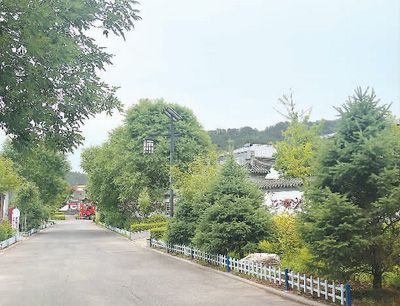Thriving tourism benefits Chinese people
China has become the biggest domestic tourism market in the world. In 2023, domestic tourist trips in the country reached 4.89 billion, and domestic tourists spent a total of 4.91 trillion yuan ($691.2 billion).
China's flourishing tourism industry has increasingly become a sector that helps improve living standards and brings happiness to its people.
In recent years, travel has increasingly become a lifestyle choice for Chinese people to pursue a better life.
"I chose to live in Arxan city in north China's Inner Mongolia Autonomous Region just after I retired last year," said a tourist surnamed Liu from north China's Hebei Province.
Liu said she can appreciate the blooming flowers in spring, escape the summer heat, enjoy breathtaking autumn scenery, and immerse herself in ice and snow tourism in Arxan.
Arshan, a national-level tourist resort, has strived to turn itself into a health and wellness tourism destination in recent years. It has continuously improved its tourism infrastructure and services such as roads, dining and accommodations, and promoted business forms in the leisure tourism industry like self-driving tours, summer retreats, and winter tourism, attracting more regular visitors.
There are 63 national-level tourist resorts across China, effectively increasing market supply and better meeting the people's need for leisure and vacations.
Thanks to the integration of technologies with culture and tourism, smart tourism and educational tours have gained in popularity, better satisfying the people's needs for quality, personalized travel experiences, and knowledge while traveling.
Delighting themselves and broadening their horizons during trips, an increasing number of people are enjoying the rewards and happiness that come with traveling.
Leveraging their unique cultural and tourism resources, more and more once previously little-known cities in China experience new vitality. Since the beginning of this year, cities like Tai'an, Zibo, Tianshui, Kaifeng, and Jingdezhen have all seen a surge in tourist arrivals, exceeding the levels of the same period last year.
Rural tourism has become an industry that generates employment opportunities for farmers and increases their incomes.
Guchengchuan village beneath the Jinshanling section of the Great Wall in Luanping county, north China's Hebei Province has become a tourist attraction.

Photo shows a scene from Guchengchuan village, Luanping county, north China's Hebei Province. [People's Daily Overseas Edition/Zhu Jinyi]
Several years ago, the village renovated houses according to corresponding standards and built roads to develop tourism. In 2019, the village established a tourism company and invested 1.8 million yuan to transform the villagers' vacant houses into five characteristic B&B hotels, enabling tourists to tour the Great Wall while enjoying pastoral pleasures.
The integration of rural tourism and the B&B hotel industry has increased the village's collective income by over 200,000 yuan annually and provided employment opportunities for more than 300 villagers.
The tourism industry is creating a multiplier effect, bringing prosperity, benefits and happiness to the people.
Booming tourism drives up other industries. Tourism is integrating with culture, sports, wellness, and other sectors at an accelerated pace.
Taking advantage of its natural conditions, Ninghai county, an ideal destination for outdoor activities in Ningbo city, east China's Zhejiang Province, has developed sports tourism products and projects, including water sports, rock climbing, cycling, camping, drifting, and gliding. It has established a national-level outdoor sports base and hosted events like trail running and hiking, attracting crowds of visitors and local residents.

Participants compete in the Ultra-Trail Ninghai in Ninghai county, Ningbo city, east China's Zhejiang Province. [Photo/You Caibin]
Thanks to the opportunities brought by the sports tourism industry, Shenquan township in Ninghai county has taken the lead in developing the trekking pole industry. Gradually, the township's annual production of trekking poles has reached 15 million, with an annual output value of more than 920 million yuan. It has become the largest production base for trekking poles in China, accounting for 60 percent of the global market share.
























